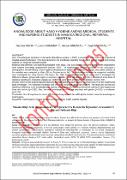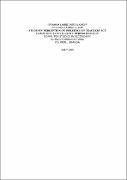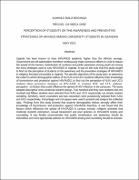| dc.description.abstract | Aim: The pathogenic bacterium on the hands of healthcare workers (HCWs) is considered as the main route of spread of hospital-acquired infections. This study determines the knowledge regarding hand hygiene among medical and nursing students in a Regional Referral Hospital.
Material and Methods:
100 students participated in the study. Data was collected using the World Health Organization hand hygiene knowledge questionnaire (revised 2009). The questionnaire contains questions on the participant’s demographics, formal training in hand hygiene and questions to assess hand hygiene knowledge. Descriptive statistics of the variables were computed as Mean±SD and frequencies (n, %). The relationships between the categorical variables were investigated by using Pearson Chi-Square test. Also independent-samples t-test were used to investigate the difference between groups with regard to numerical variables. In all calculations, P< 0.05 is considered as the level of statistical significance. Statistical analysis was performed using SPSS 20 (IBM SPSS statistics, Somers, NY).
Results: 90.8% of the students reported receiving formal training in hand hygiene. However only 2% of the students had good knowledge, 74% moderate knowledge and 24% low knowledge about hand hygiene. The study did not find any significant difference in the knowledge level between the students who had received formal training in hand hygiene and those who had not (p=0.392). Also, the mean knowledge score was not associated with gender (p=0.82), or profession (p=0.179).
Conclusion: It is of importance to devise effective teaching methods that will help the students retain the knowledge on hand hygiene | en_US |




